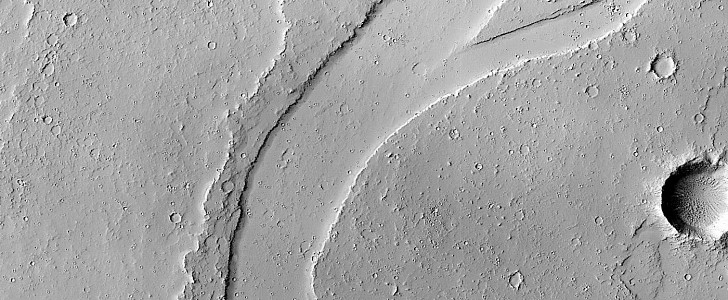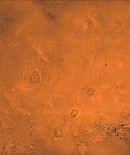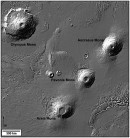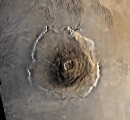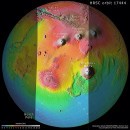We know of several forces capable of carving their way through the surface of a planet, leaving it with visible scars in the process. One of those forces is life-giving water. The other, devastating lava. And they both were quite busy on Mars too a long time ago.
There are, technically, several major features that make our neighboring planet what it is. We have the vast, crater-riddled plains, a huge canyon looking like a large cut across the planet’s face, and a number of volcanos (some incredibly huge) that are now, like the entire world, for that matter, dead.
Linking them all together are lots and lots of channels that formed over eons as the surface got eroded by water or eaten away by hot lava.
The channel we’re now looking at, smooth and serene in appearance, was carved by lava. It sits somewhere in the Tharsis region of the planet, and we’re looking at it as was seen from an altitude of 278 km (173 miles) by the HiRISE camera back in 2016.
According to what scientists already know about the place, the channel runs for 115 km (70 miles), and for most of its entire length, it maintains more or less the same width. The portion of the channel we see here also comes with an island, which even if it looks rather small, is actually 1.25 km (3.4 miles) long.
Scientists are looking at images of lava channels in the hopes to better understand “the interplay of the features on Mars,” which may “tell a more complicated story” than in the case of the lava flows and rivers we have here on Earth.
“We want to be able to understand the history of volcanic activity in Tharsis, as well as possible interaction with ground water release, to better understand some of the younger landforms on Mars,” the scientists say.
Linking them all together are lots and lots of channels that formed over eons as the surface got eroded by water or eaten away by hot lava.
The channel we’re now looking at, smooth and serene in appearance, was carved by lava. It sits somewhere in the Tharsis region of the planet, and we’re looking at it as was seen from an altitude of 278 km (173 miles) by the HiRISE camera back in 2016.
According to what scientists already know about the place, the channel runs for 115 km (70 miles), and for most of its entire length, it maintains more or less the same width. The portion of the channel we see here also comes with an island, which even if it looks rather small, is actually 1.25 km (3.4 miles) long.
Scientists are looking at images of lava channels in the hopes to better understand “the interplay of the features on Mars,” which may “tell a more complicated story” than in the case of the lava flows and rivers we have here on Earth.
“We want to be able to understand the history of volcanic activity in Tharsis, as well as possible interaction with ground water release, to better understand some of the younger landforms on Mars,” the scientists say.
